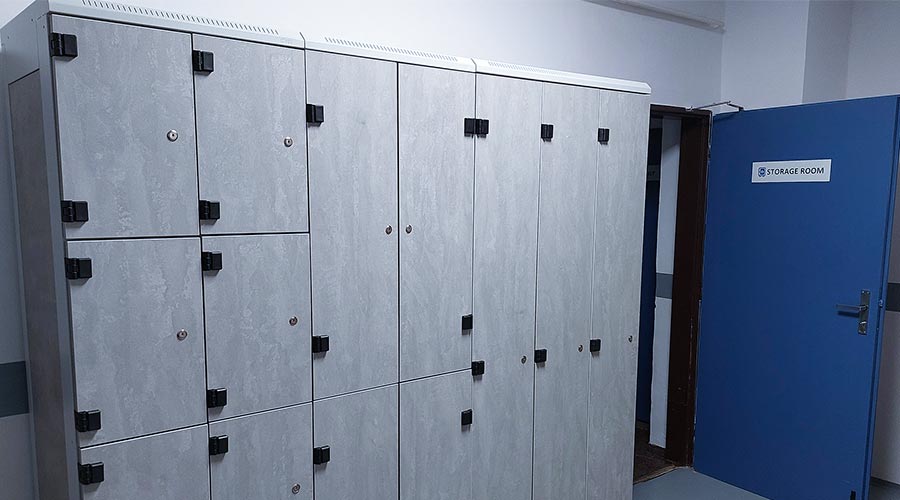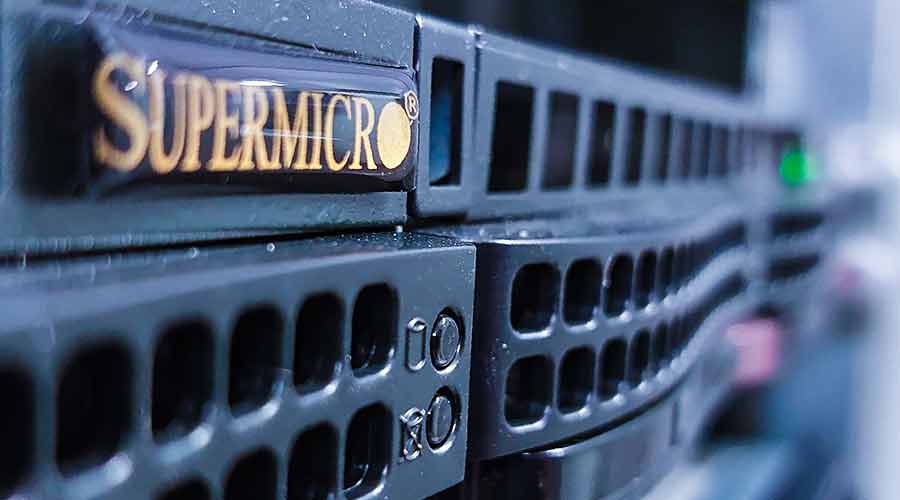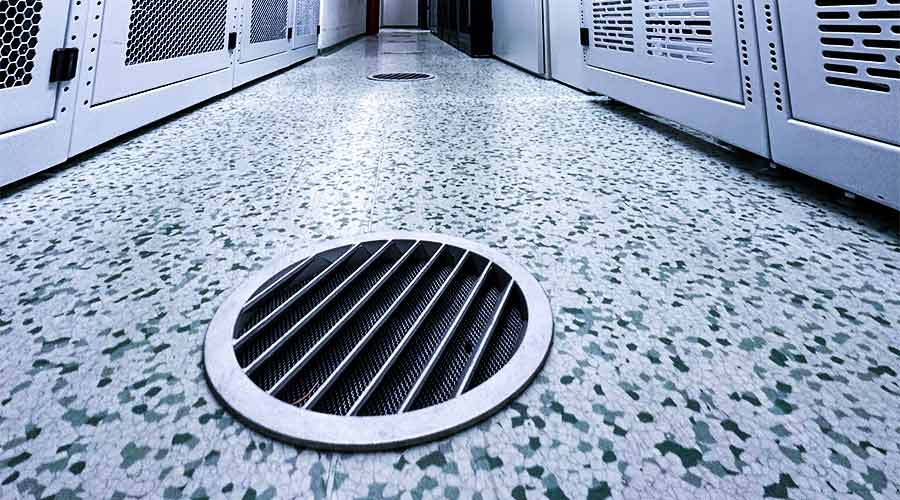It sounds like a fairy tale: a direct transformation of waste heat of a processor to the electric energy. The investors from all over the world flew together like wasps on a melon, immediately when the fantastic news appeared, that ENECO company developed a component, which can be applied to any computer chip and it performs a conversion of the waste heat of the chip to (backward) generation of electricity. In the materials of the company it is spoken about „thermionic conversion of energy“.
Servers and waste heat
The heat generated by the processor, especially in a concentrated form in the server places and the data centres, is only a „harmful“ waste. It must be liquidated with difficulty or more precisely it must be, at the cost of another expensive electric energy, taken away and dispersed into the external space. Firstly from the chip into the space around it, secondly from the inside of the computer through the cooling fan into the space of the server place and finally from here, by another imperfect heat transfer, through air handlers into the external space outside of the server room. However, this waste heat could become a source of the precious electric energy. Instead of further electricity consumption for the cooling, the electric energy consumption should not only cut thanks the more than a half lower production of the waste heat but also even greater amount of the primarily waste heat should be transformed to the electricity. It could be again reused for the power supply of the telehouse equipment.
How does it all work?
Heat is one of the basic forms of the energy, it is all around us. We know somehow intuitively that a freshly brewed cup of tea contains more energy than the same one two hours later, when the tea became cold. The heat has dispersed into the surroundings. The heat at the physical level of the atoms is their kinetic energy. If they don’t have „any“ energy, they freeze – as well as our cup of tea during further cooling on the window sill outside in winter or in the freezer.
While the particles at the atomic level can „freeze“ and stiffen, such as in water at the temperature below 0°C, at the subatomic level the electrons are always in motion at the temperatures higher than the temperature of absolute zero (-273,15°C). The electrons not only constantly move around the nucleus of atom but they above all also exchange their positions in metals. And the motion of the electrons is the electric current. When the electrons are in the warm condition they have higher energy and they are more willing to change their positions or possibly to jump over to adjacent atom. These jumps aren’t big, the distance ranges from one to ten nanometres.
A little bit of history
Thermoelectric effect is known for quite a long time. It was accidentally discovered in 1821 by a German physicist Thomas Johann Seebeck, who found out that there exists an electric voltage between both ends of a metal rod when there is a temperature difference between the ends of the rod. Then the Seebeck effect was named after him: when two conductors from different metals are joined in a closed loop and when there is a temperature difference between the junctions, the electric current flows through the loop.
In 1834 Peltier then described an effect, when a direct electric current from an external source is passed through a loop composed of two dissimilar metals then there appears a temperature difference between the two junctions. If the current flows from the external source through the junction in the same direction, the direction, which has the current in the Seebeck effect when this junction heats up, then the given junction cools off. If the current flows in an opposite direction then the junction heats up. The Peltier effect depends on the type of the metals and their temperature.
This is the principle of the thermoelectric couples. A thermoelectric couple, simply speaking, generates the electric current depending on the temperature difference on its both sides or the temperature difference depending on the electric flux. It is possible to use it for cooling as well as for heating. We can choose for heating of course from a great variety of other – generally preferable ways and so as a main range of practical use remains cooling. Nevertheless the properties of the thermoelectric couples can be also successfully used for exact temperature measuring in quite wide temperature ranges (according to the used materials even up to 1600°C). And last but not least the thermoelectric couple can be used for power generation there, where the temperature difference is available. And that is the very case of the surface of the chip – of the processor.
Modern way over semiconductors and nanotechnologies
The main disadvantage of the thermoelectric materials lies in the fact that together with the desired motion of the electrons, there is also an unwanted heat transmission and it causes a decrease of a temperature gradient (temperature difference) and consequently also the decrease of possible efficiency of the whole mechanism – the thermoelectric couple.
The main research tries to solve the problem of a conservation of the temperature gradient (of the temperature difference on the both sides of the couple – the wider the better power). This research focuses on the finding of the junction (port), which will easily transmit electrons but will have the thermal resistance as highest as possible. And the very ENECO company works with the semiconductors. The utilization of the semiconductors could have several significant advantages for the thermoelectric couples. The first and fundamental advantage should be much higher efficiency than by traditional thermoelectric couples, which consists of two dissimilar metals. The technology, regarding the semiconductors, of processing and application (respectively steaming) of arbitrarily thin layers on arbitrarily big or rather small areas is in addition very well mastered from the chip industry. ENECO claims, that they are able to ensure the efficiency up to 50 % of the Carnot’s cycle, so get c. 30% efficiency in the transformation of the waste heat to the electric energy.
The path ahead is not only lined with roses
Despite the optimistic proclamations about the efficiency percentage and early dates of placing of the commercial products on the market (1Q 2008), many of this stayed only on paper. The path to the break-through waste heat recovery of the processor isn’t lined with roses. The research is very expensive and the patience of the investors short. Complications, which have occurred during the development of a component, which could be commercially placed on the market, led to delay and in the end effect to the situation, when on the 18th January 2008 ENECO company asked for protection from creditors.
In the meantime, another producer appeared – Power Chip company from Gibraltar – whose chip reaches allegedly the efficiency up to 80% of the Carnot’s cycle, so c. to 50% efficiency in the transformation of the waste heat to the electric energy. Power Chip bets on nanotechnologies. With the help of these it should be allegedly possible to create a thermoelectric couple and between two thermoelectric materials there would be a layer – nanomembrane – enabling an easy transmission of the electrons but holding down the unwanted heat transfer.
Whether this technology will be someday in the future successfully managed – so at the acceptable level of the efficiency in proportion to the production cost – it isn’t clear. Physics don’t exclude this. Or will the cheap, safe and inexhaustible energy from the nuclear fusions come sooner?
Apparently not. The energy will be probably never cheap because energy business has many strong players, who are ready to monopolize any new production area and the energy distribution, if it appears. And so the prospects of the waste heat recovery with the side effect of processor cooling remain still very attractive.
Karel Umlauf, COOLHOUSING.NET




